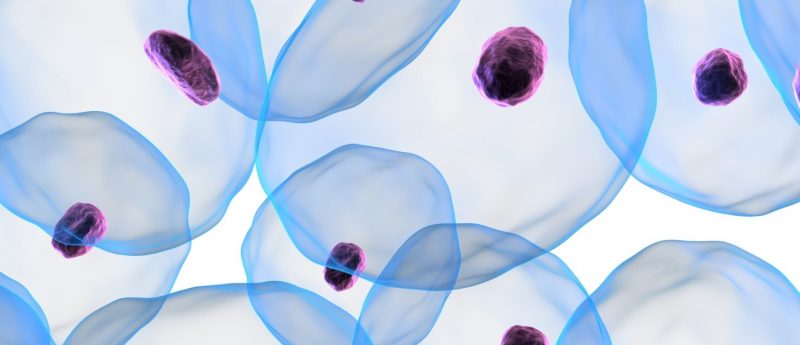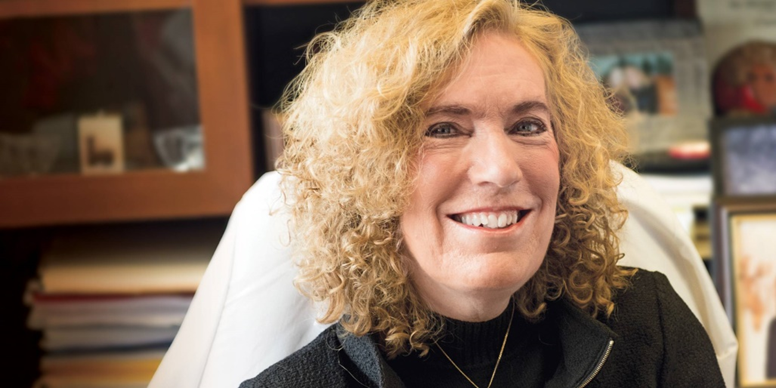International Women’s Day: a day in the life of Elaine Fuchs

To celebrate International Woman’s Day, Elaine Fuchs, Rebecca C. Lancefield Professor, Rockefeller University, shares a day in her life.

Elaine Fuchs
Elaine Fuchs received a BS from University of Illinois (IL, USA) and her PhD from Princeton University (NJ, USA). She accepted a faculty position at University of Chicago in 1980 and moved to Rockefeller University (NY, USA) in 2002, where she is currently the Rebecca C. Lancefield Professor of Mammalian Cell Biology and Development and the Howard Hughes Medical Institute. In 2009, she received the National Medal of Science and was also awarded the L’Oreal-UNESCO Award, and in 2015 she was awarded the American Society for Cell Biology’s highest scientific honor, the E.B Wilson Medal. Her lifetime of research has focused on the biology of skin and hair.
When does your alarm go off?
On a typical day, 6:00am. I go to the gym, get on the elliptical machine for an hour whilst catching up with CNN. When I come home, I have breakfast with my husband and go through emails, then I am usually in the office by 9:00am.
What is your typical day?
I spend a lot of time connected with my PhD students and postdoctorates (who have their PhD and come to my lab for advanced training). I review their research, provide advice and work on manuscripts and grants. With the exception of my faculty colleagues, I defer most other meetings to the end of the day, after my assistant leaves for the day. Before I leave, I usually make the rounds through the laboratory to discuss any last minute results that have come in during the day.
What is the best part of your job?
For me the best part of my job is combining professorship with research. I take both very seriously; I enjoy interacting with and watching my students and postdoctorates develop their research careers, thinking independently and coming up with creative ideas, and I really, really enjoy going over research results, coming up with new experiments, and discussing the science and what it means.
We’re always trying to identify the big question; we want to identify the conceptual novelty of what we’re doing and do meaningful science that ultimately will be useful either in the clinic or to the pharmaceutical industry. We love to see our research taken to the next level, even though I’m a basic scientist and consequently focus most on scientific questions looking at the mechanisms that underlie basic principles. In my own case, this is research into tissue stem cells, and how they go awry in different human genetic diseases and malignancy.
“I would say it’s critical to find good women colleagues to inspire each other and I think we’re all better scientists because of it”
What is the worst part of your job?
The worst part of my job is sometimes having to address criticism that I think is not fair, for example for a research grant. I think women, especially, really sense fairness; I don’t mind a tough question or criticism when it’s well-founded, but if it’s not well-founded I think that’s where I find it the most difficult to deal with it. It’s particularly painful for me to have negative feedback towards a manuscript that might be a student’s first. I’ve seen and dealt with it before in my lifetime, but for young investigators in my group, the first encounter is always difficult.
What happens after work?
I usually head out the door around 7:30pm, and go home and have a nice dinner with my husband.
Who is a female scientist that has inspired you?
When I first was looking at positions, as I was transitioning from a postdoc to a faculty member, I met Shirley Tilghman, subsequently President, Princeton University, 2001-2013. Shirley and I met very early on; she was a mouse geneticist and I was working on human model systems and we just became very good friends, both mutually respecting each other’s science.
Another inspiration was Janet Rowley. She discovered the first chromosomal breakpoint in human cancers and was a faculty member at University of Chicago which is where I began my career. When I first started, I had just received some very small fellowship and Janet wrote me a hand handwritten note to congratulate me. I always thought coming from her, where she was already well-known and well-regarded in the field, it meant a lot to me. We became good colleagues during the course I was there.
“The worst part of my job is…[addressing] criticism that I think is not fair… I think women, especially, really sense fairness”
The third was Susan Lindquist, who died a couple of years ago. Susan and I were colleagues at University of Chicago and instantly became friends. My husband and I continued to be very close friends with Susan and her husband. She was perhaps my closest friend and colleague, almost like a sister.
Mina Bissell is a very prominent breast cancer researcher who and I met very early on; she was at Lawrence Berkeley Laboratory (CA, USA) so we were never colleagues together but we got to know each other through mutual respect for each other’s research and continue to be close friends to this day. Women really make a very important part of the research community.
An inspiration on your side of the ocean is Fiona Watt. She and I overlapped when I was a post-doc in Howard Green’s laboratory at the Massachusetts Institute of Technology many years ago. We work in the same area of research on skin and skin biology, and she and I continue to maintain our friendship. It’s critical to find good women colleagues who inspire each other. I think we’re all better scientists because of it.
If you weren’t a scientist, what would you be?
Without question, I would like to be a National Geographic photographer. I love traveling, I love the world and I love photography!